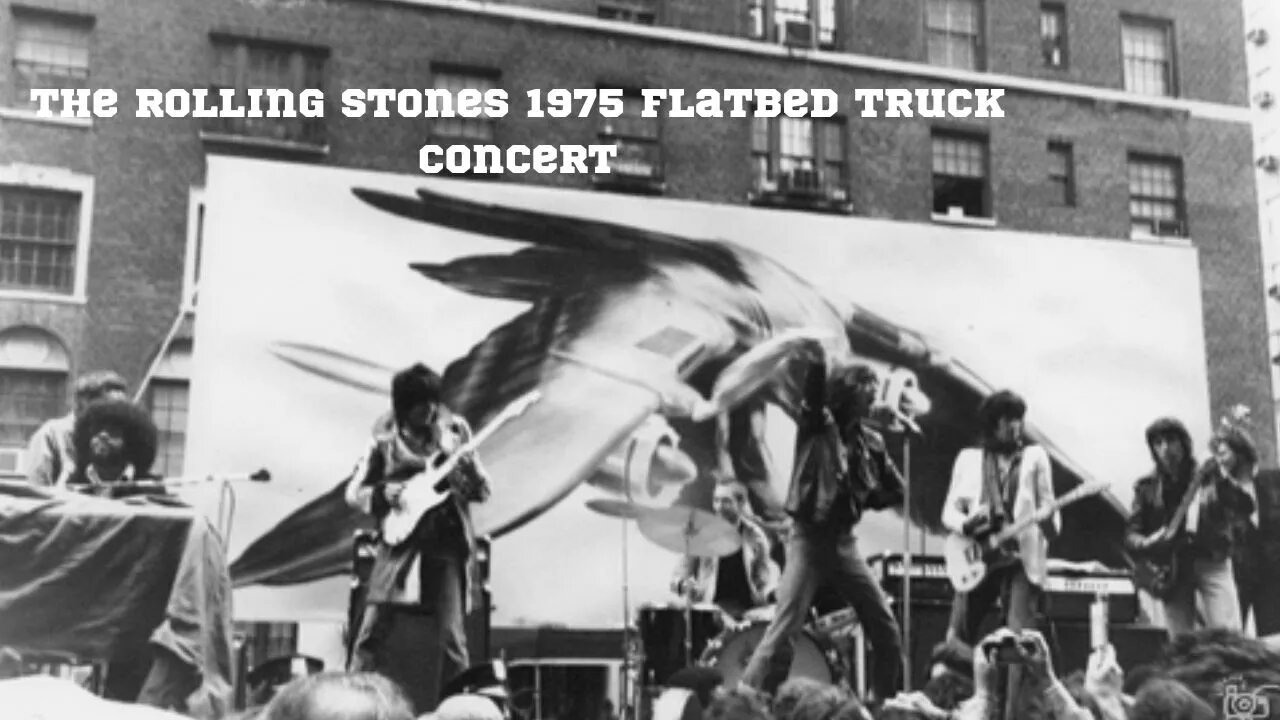Premium Only Content

Watch the Unexpected: When the Rolling Stones Take the Stage on a Flat Bed Truck! #shorts
On May 1, 1975, the world got to witness one of the most unique and iconic press conferences in music history. The Rolling Stones, already famous for their rebellious and unpredictable ways, surprised everyone by holding their press conference on the back of a flat-bed truck driving through the streets of Manhattan. This impromptu and unorthodox approach to a press conference would become a defining moment for the Stones, cementing their status as cultural icons and pushing the boundaries of what was acceptable in popular music.
The idea for the flat-bed truck performance came from drummer Charlie Watts, who drew inspiration from the New Orleans jazz musician practice of playing on the back of a flat-bed truck during parades. This tradition, which dates back to the late 1800s, was a way for musicians to bring their music to the streets and engage with a wider audience outside of traditional concert venues. It was a way to make music more accessible and inclusive, and to connect with people in a way that was both spontaneous and genuine. For Charlie Watts, this approach felt like a natural fit for the Stones, who were known for their raw and authentic sound and their disdain for the trappings of fame.
The Rolling Stones had already been on a two-month U.S. tour when they arrived in New York City on May 1, 1975, and they were scheduled to do a press conference at the Fifth Avenue Hotel. However, when they arrived at the hotel, they found a throng of reporters and photographers waiting for them, and the scene quickly became chaotic. The Stones decided that they didn't want to do a traditional press conference inside the hotel, where they would be surrounded by suits and microphones, and they asked their tour manager, Ron Schneider, to find them a more creative solution.
That's when Charlie Watts came up with the idea of the flat-bed truck, and the Stones decided to take their press conference to the streets. Schneider and Watts quickly found a truck that was available, and they drove it to the hotel to pick up the band. Mick Jagger, Keith Richards, Ron Wood, and Bill Wyman climbed on board, along with Schneider and a few other members of the Stones' entourage, and the truck set off through the crowded streets of New York City. The scene was chaotic and wild, with hundreds of fans and onlookers chasing the truck and trying to get a glimpse of their favorite rock stars.
The Stones played a few songs on the truck, including "Brown Sugar" and "Street Fighting Man," and they took questions from reporters who were following them on foot or in cars. The acoustics were less than perfect, with the sound of the truck's engine and the noise of the city drowning out some of the music and conversation, but the energy and atmosphere were electric. For the Stones and their fans, it was a thrilling and unforgettable moment, an act of rebellion and freedom that embodied everything that the band stood for.
The impact of the flat-bed truck performance was immediate and far-reaching. It was covered by every major news outlet in the country, and it became one of the most talked-about events of the year. The Stones' willingness to break with tradition and take their music to the streets challenged the status quo and inspired a generation of musicians and fans to think outside the box. It also cemented the Stones' reputation as cultural icons who were not afraid to take risks and push boundaries, and it helped to solidify their place in the pantheon of rock and roll history.
In the years since the flat-bed truck performance, the Rolling Stones have continued to push the envelope and challenge expectations. They have released some of the most iconic albums and songs in rock history, and they have played countless legendary concerts around the world. But for many fans and music historians, the flat-bed truck performance remains one of the band's most enduring and impactful moments. It was a moment of pure rock and roll rebellion, a spontaneous and authentic expression of the Stones' wild and untamed spirit, and an unforgettable example of the power of music to connect people across all boundaries and borders.
-
 1:23:41
1:23:41
Game On!
19 hours ago $6.48 earnedNetflix NFL Christmas Games Preview and Predictions!
35.8K5 -
 2:05:07
2:05:07
Darkhorse Podcast
23 hours agoWhy Trump Wants Greenland: The 257th Evolutionary Lens with Bret Weinstein and Heather Heying
272K427 -
 8:50:58
8:50:58
Right Side Broadcasting Network
23 hours ago🎅 LIVE: Tracking Santa on Christmas Eve 2024 NORAD Santa Tracker 🎅
294K39 -
 2:48
2:48
Steven Crowder
1 day agoCROWDER CLASSICS: What’s This? | Nightmare Before Kwanzaa (Nightmare Before Christmas Parody)
279K12 -
 33:49
33:49
Quite Frankly
22 hours agoThe Christmas Eve Midnight Telethon
94.4K21 -
 2:12:46
2:12:46
Price of Reason
21 hours agoAmber Heard BACKS Blake Lively Lawsuit Against Justin Baldoni! Is Disney CEO Bob Iger in TROUBLE?
51.7K22 -
 1:01:17
1:01:17
The StoneZONE with Roger Stone
16 hours agoChristmas Edition: Why the Panama Canal is Part of the America First Agenda | The StoneZONE
122K46 -
 18:12:15
18:12:15
LFA TV
1 day agoLFA TV CHRISTMAS EVE REPLAY
138K15 -
 13:32
13:32
Scammer Payback
17 hours agoChanging the Scammer's Desktop Background to his Location
9.47K3 -
 4:21
4:21
BIG NEM
19 hours agoNikola Tesla's Secret to Cultivating Creativity & Genius
6.52K1